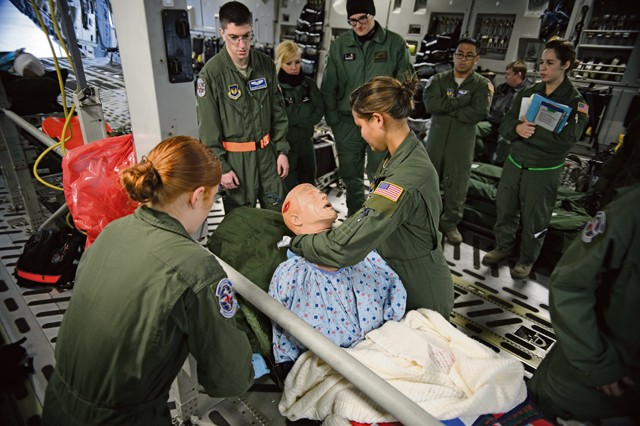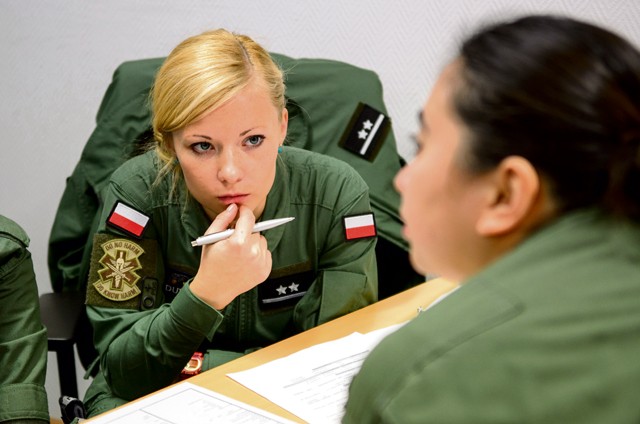
Members of the Polish air force aeromedical evacuation team visited Ramstein’s AE units during a four-day familiarization tour Dec. 1 to 4.
U.S. Air Forces in Europe and Air Forces Africa hosted the Polish team hoping to build a stronger bond between the two nations. Another objective of the tour was to offer the Polish team lessons and knowledge learned from years of experience moving patients all over the world.
“Interoperability with our allies along all lines of effort is crucial to supporting USAFE’s strategic objectives, and health service support is a requirement common to all operations,” said Lt. Col. Doron Bresler, USAFE international health specialist team medical readiness division specialist. “Showcasing our capabilities for our allies promotes professional cooperation efforts and effective collaboration in both training and operational environments.”
The Polish team saw Airmen conduct evaluations, set up a C-17 Globemaster III to transport patients and offload patients. They also toured aeromedical facilities and discussed best practices used by the active-duty, guard and reserve Airmen.
“It’s such a great opportunity to be here and see how things work,” said Polish air force 2nd Lt. Krzysztof Romek, Polish aeromedical evacuation doctor. “It’s good to … share experiences and ideas. We hope that we can put some of (the U.S. Air Force’s) ideas and procedures to use within our aeromedical evacuation team, and make it work more efficiently.”
The Polish team also visited the 603rd Air and Space Operations Center, U.S. Transportation Command’s Theater Patient Movement Requirements Center-East, 86th Aeromedical Evacuation Squadron and the 10th Expeditionary Aeromedical Evacuation Flight.
At the 10th EAEF, Staff Sgt. Jesse Visser, duty controller, gave them insight into a deployed aeromedical mission.
“It feels awesome to be able to have this opportunity,” Visser said. “This team has been very inquisitive and enthusiastic. We’re building camaraderie between friendly nations on a personal level when we’re able to take them into our ‘homes’ and show them a job that means a whole lot to us.
“The Polish (aeromedical evacuation) team shares our passion, and it is incredible that we have the opportunity to ask each other questions and show each other how we finish our mission,” Visser continued. “We share this mission and our passion for airlifting patients, but after this experience, we also share friendship in doing this mission that will be remembered by future U.S. and Polish (aeromedical evacuation) teams.”
While the visit may have been short, the participants and organizers hoped this was just one step in strengthening friendships and each force’s aeromedical evacuation missions in order to save lives in and around Europe and Africa.



